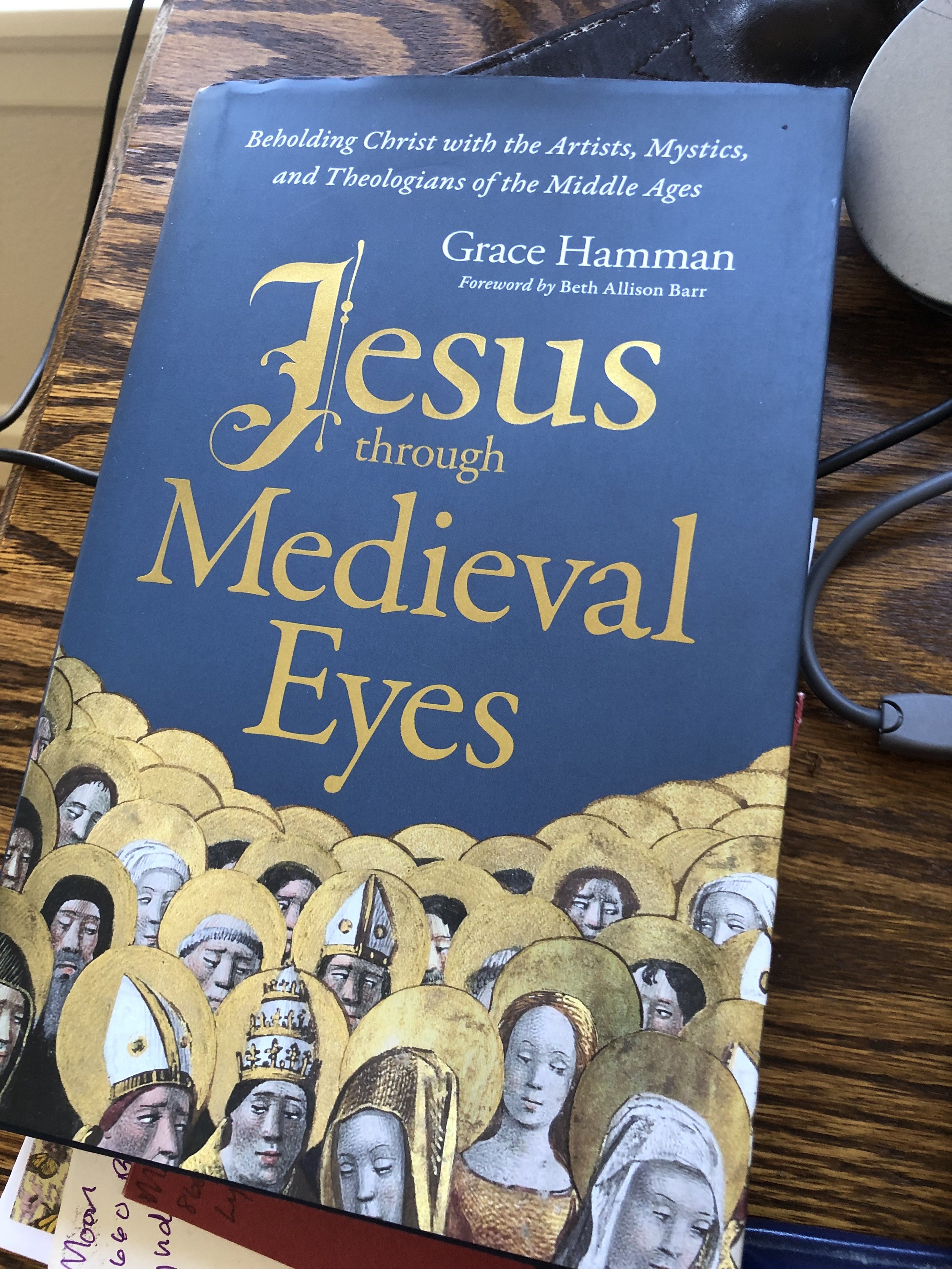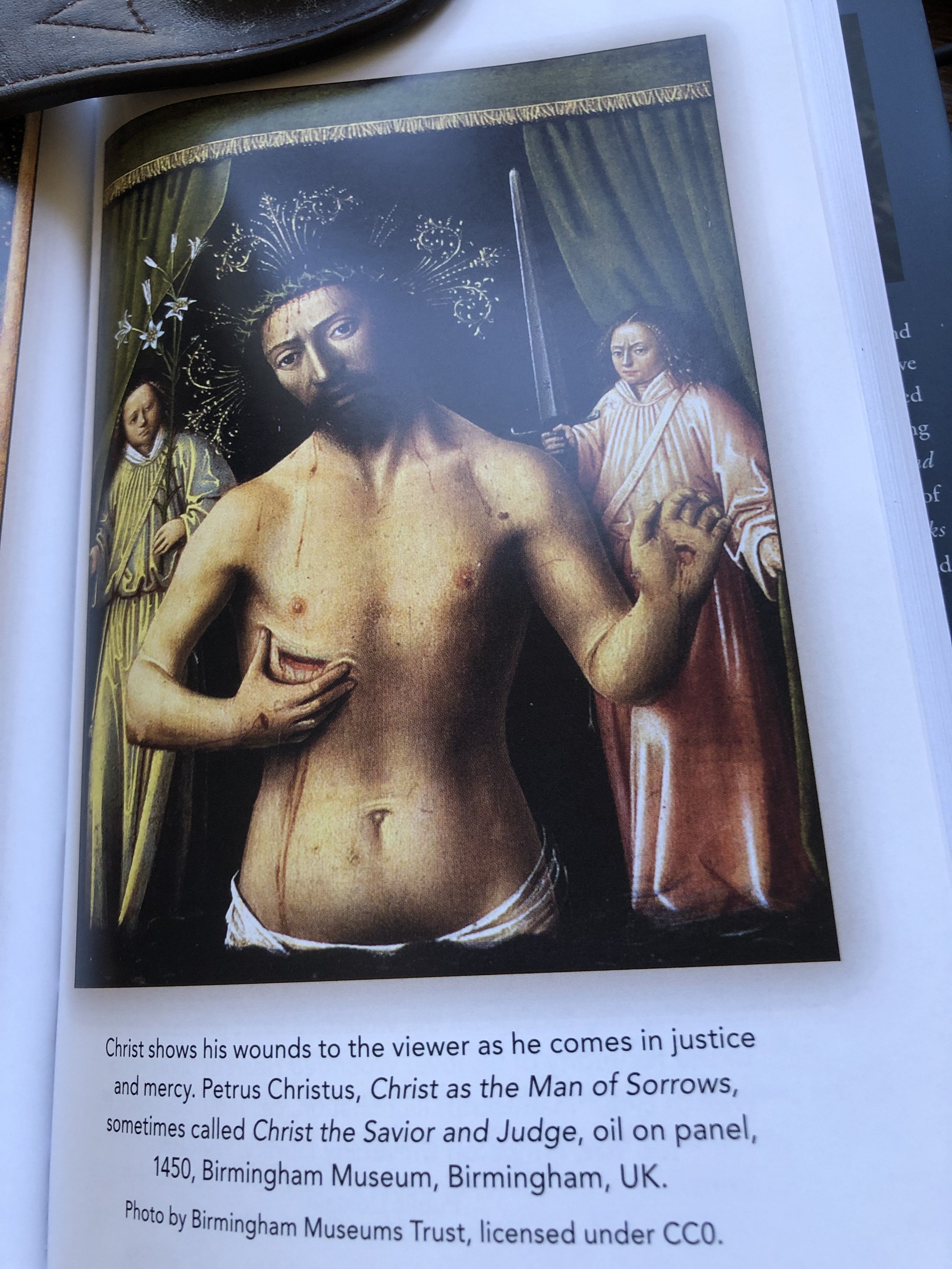Jesus through Medieval Eyes: Beholding Christ with the Artists, Mystics, and Theologians of the Middle Ages by Grace Hamman
Lately, I’ve fallen in love with pretty books—books with beautiful illustrations as well as lovely covers, pleasing fonts, and even pleasant-to-the-touch pages. This means a lot of children’s picture books are catching my eye, but I’ve also read a couple about art. Rembrandt is in the Wind: Learning to Love Art Through the Eyes of Faith was one. Very good! Also, All the Beauty in the World: The Metropolitan Museum of Art and Me and Art+Faith: A Theology of Making. I read somewhere that someone asked, “Who ever said that books written for adults shouldn’t have pictures?” I agree! I’m glad that beautiful books seem to be gaining ground.
Jesus through Medieval Eyes is a beautiful book and includes many pictures of the art it discusses. It also helps to have the internet to search and see even more detail. It was so interesting to learn about what medieval paintings were “saying” that is not apparent to our eyes. I have been following the advice I read somewhere, too, when looking at a piece of art, slow down and just notice what you see. I often have marveled at the way art experts can look at a painting or sculpture or whatever and speak at length about what they see. I was in the habit of sort of summarizing quickly what I saw, “Oh, there’s a girl.” Or maybe, “There’s a girl standing in the wind.” It seemed like that was all there was to see, and then I’d move on. But you’d be surprised at what you see if you just stop and notice. Maybe there’s something in the shadow. Maybe something is hidden in a pattern. You can wonder where the light hits and where it’s coming from. I often have no insight as to what each thing I notice means or signifies, but just noticing it gives me more to receive from the art, and perhaps wonder.
Sometimes, medieval art seems pretty weird. For example, there’s a whole theme about the wounds of Christ:
…medieval thinkers saw Christ’s broken body as a charter crafted by compassion, and the strange hieroglyphs of his streaming blood as the contract in which we are united to him. The fourteenth-century English hermit Richard Rolle wrote,
Sweet Jesus, thy body is like a book written all with red ink; so is thy body all written with red wounds.
Now, sweet Jesus, grant me to read that book, and somewhat to understand the sweetness of that writing…
~~Jesus through Medieval Eyes: Beholding Christ with the Artists, Mystics, and Theologians of the Middle Ages by Grace Hamman, Zondervan Reflexive, copyright 2023, page 159.
The author, Grace Hamman, calls these writings about Christ’s blood “one of the stranger metaphors of the Middle Ages” (page 159) and says:
I immediately have some objections to this intense focus on suffering as our way into thinking about the cross and union with Jesus. The first is practical: How can suffering be a place of union? Pain is weirdly individual…
The second objection is instinctual: ick. (page 162)
Yes, ick! Hamman goes on to write about how we modern folk, maybe especially Americans, see suffering as “only cause for dread and avoidance,” from the comparatively minor suffering of the tedium of waiting at the DMV to “the universal suffering of aging and dying that we hide with style or surgery or sequester to nursing homes and funeral parlors.” She asks, “[M]ight there be a strange, hidden wisdom waiting for us postmodern folk in reading the book of Christ’s suffering alongside medieval people?”
Fair enough.
There are many more intriguing, interesting insights about the medieval artists, mystics, and theologians this book discusses. I highly recommend it. Dr. Grace Hamman also has a podcast called “Old Books With Grace” that I enjoy listening to and a Substack newsletter, @GraceHamman. I like them all. Dr. Hamman has a new book coming soon that I am looking forward to reading, too.



